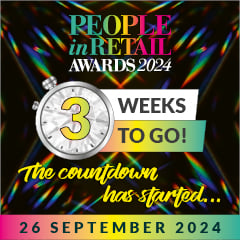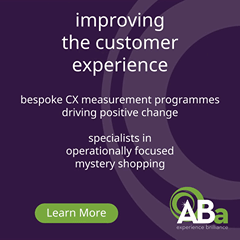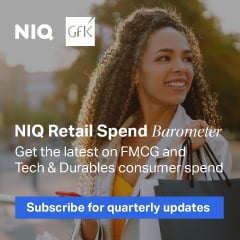Q&A: Paul Boyle, CEO of Retail Insight
Retail Insight is the leading provider of advanced analytics software, which optimises store operations in grocery retail, delivering profitability and productivity through data.
Can you tell us a bit about your background?
I’m a Master’s graduate in Engineering, and I became CEO of Retail Insight in 2011, having previously served as COO since the business was founded in 2005. Prior to Retail Insight, my background was working in Commercial and Strategy at Consumer Package Goods (CPGs), including Procter & Gamble (P&G) and HJ Heinz.
What does your company do? / What is your USP?
Retail Insight is the leading provider of advanced analytics software, which optimises store operations in grocery retail, delivering profitability and productivity through data. The insights we deliver help retailers tackle some of their biggest challenges, including product availability, food waste management, inventory accuracy and operational efficiency.
Put simply, Retail Insight’s focus is helping grocery retailers and CPGs harness the power of their data to maximise the full sales and profit potential from their stores.
Our API-first software solutions ingest retailers’ foundational data, such as POS, inventory, product and ERP information, unlocking valuable insights to drive profitability. Our solutions seamlessly integrate into existing tech stacks, lowering the investment barrier by increasing scalability and opening up additional value in the tech ecosystem.
Retail Insight’s USP is that our solutions are powered by cognitive technology; a unique blend of human subject matter expertise and advanced mathematical techniques. It can include the use of AI and ML where appropriate, but it enables a more pragmatic, practical and impactful approach to decision-making. It’s a powerful combination that’s incredibly difficult to replicate and is proven to boost sales, cut losses and sharpen retail efficiency.
As a result, we are able to deliver actionable insights and unparalleled time to value, which is why we’re trusted with processing 10% of the world’s global retail data, equating to 2trillion calculations each week.
In 2023, for example, we delivered over $600million in gross profit back to our customers, delivering an average ROI of over 30x. We also helped retailers reduce their carbon emissions by preventing more than 225,000 tonnes of waste.
What’s special about the platform and your approach?
To use a football analogy, we’re either helping our clients attack or defend. To attack is to help our clients drive more sales. For example, Retail Insight’s availability systems are focused on helping identify gaps on the shelf or barriers to sale – we help retailers fix these and we boost their overall sales performance and margin.
When we’re defending, we help retailers understand where they might be letting profit slip through their fingers. It’s here that our waste solution, WasteInsight, comes into play. For example, when you have a product that is close to its expiry date, it often ends up being wasted. But we can help retailers price it more effectively to drive what is still good product into the hands of customers, rather than into landfill, thus avoiding the cost of wastage and disposal of the product, as well as the negative impact on the environment cause by waste food.
Both attacking and defending are made easier when they’re powered by the insight that comes from data analytics – and that’s where Retail Insight comes in.
Which retailers are you working with and how are they using your solution?
Retail Insight is trusted by 30+ of the world’s leading grocery retailers and CPGs, including Asda, Kroger, Co-op and Sprouts.
We have been supporting Asda’s in-store operations since 2009, leveraging our solutions to improve replenishment and availability. Most recently, we have partnered with them to help them tackle phantom inventory. This involved drawing foundational store data from across Asda’s estate, and combining it with our InventoryInsight solution, which identifies and corrects inaccurate retailer inventory records to drive store performance.
InventoryInsight trained a data model for each of Asda’s stores, leveraging sales and inventory data to detect instances of phantom inventory. It alerts store colleagues to manually validate the stock at the shelf-edge and update the inventory file to help drive total store performance, correcting inventory accuracy, and improving product availability and sales. In just nine months, we helped Asda remove over 1.6million units of phantom inventory from its store estate, delivering a 63x return on investment.
Similarly, we have also been working with Scotmid Co-op to reduce food waste and enhance operational efficiencies in-store.
Scotmid Co-op use our WasteInsight solution, which puts retailers in control of food waste through data-led, actionable insights that support businesses’ entire waste journeys. Enabling dynamic markdowns, it also addresses expiration management, offers more efficient donations to charities, and drives improved forecasting accuracy, allowing retailers to sell more while wasting less.
By implementing WasteInsight, Scotmid Co-op was able to optimise price reductions on expiring goods using a dynamic, data-led model, which ensured more food ended up in shoppers’ baskets, rather than going to landfill. This resulted in product sell-through rising 1.83% year on year, and 42.7tonnes of food waste was saved from Scotmid Co-op’s store estate, equating to 37tonnes of CO2 reduction in landfill impact.
What challenges are retailers facing in 2024?
I think one of the major challenges for grocers, in particular, is that there are far fewer staff in store, but maybe more work for them to do as they deal with a far more complex theatre of customer fulfilment.
If a store used to have between 20 and 40 managers, it might now have between four and five. At the management level, it’s a much smaller group running what are sometimes $50million turnover stores. So, for the few staff that they do have, whether at management level or on the shop floor, they need to augment with better technology, data and analytics to help them focus on the right tasks, at the right time. This is how they will drive the much needed operational efficiency to manage sales and profitability.
Where do you see retail going in the next five years? And what will be retailers’ biggest priorities?
For all businesses, profit is becoming increasingly important. Retailers need to achieve market share growth through sustainable means, solid economics and making the right decisions – everything from where their stores are opening, to where they are currently located, to where they need to be rationalised. And also from consideration of their proposition to the customers they are targeting. Marks & Spencer is an example of a retailer that is really getting that right at the moment. It has focused on the basics of good retailing – great proposition, continuous innovation, fuller stores, and well-staffed at the appropriate times.
Environmental, Social and Governance (ESG) considerations are also huge components of decision-making. Doing the right things for the bottom line at the same time as making an impact on ESG is increasingly important. With our WasteInsight solution, for example, we’re generating huge savings for our clients, but also diverting a lot of products away from landfill and into the hands of their customers – reducing CO₂ in the process. The influence of ESG on retail decision-making will continue to grow and grow.
In the last 20 years, we’ve seen a massive shift in the understanding of data and what it can bring to the retail world. When we first started at Retail Insight, we spent a lot of time evangelising about how retailers could use data. But a lot of people weren’t so sure about it. That has massively changed. We’ve got exponentially more data, significantly more powerful analytical tools and, at the same time, a new generation of data savvy retailers taking charge in the industry. The future is very exciting for data-led retail.
What advice would you give to retailers who want to improve the insights they are getting from their data?
A lot of people tend to think, “let’s gather all the data we’ve got in one place, and then be led by the data. If we bring it all together, eventually there will be some random patterns or probabilities that materialise and present themselves to us.” The approach we’ve taken at Retail Insight has been much more determined.
We’re not a solution looking for a problem. We have very specific retail issues in mind that we are trying to solve, to make life easier for our customers. So, my advice to retailers would be to not try and boil the ocean. Be very specific about the problems you are trying to address. Then work with experts who understand these problems to define exactly what data you need in order to solve them. Rather than pulling all the data and hoping for the best, be really deliberate and specific in terms of the data you’re asking for in relation to the problems you’re trying to solve.
The next challenge is to not over-engineer the solution itself. There are simple and elegant ways to present information that can drive action. There is always a tendency to spit out as much information as possible, but what we’re really trying to achieve is maximum impact from minimal intervention.













